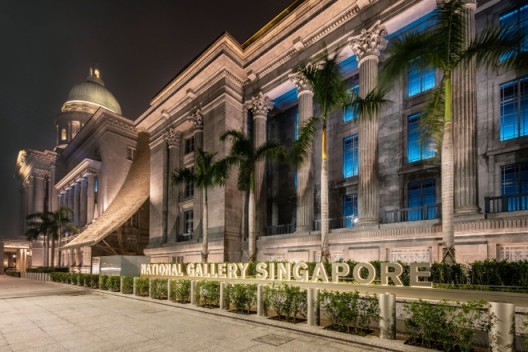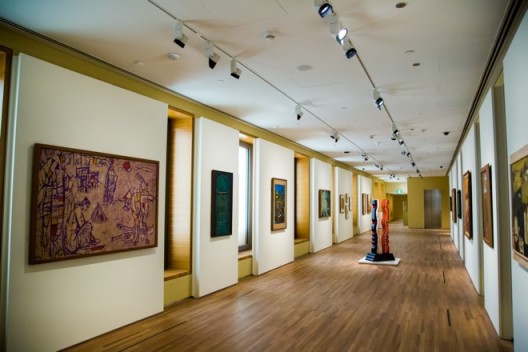Rounding off a year’s worth of celebrations for the Golden Jubilee of the foundation of Singapore is the arrival of the latest addition to its collection of museums and art galleries, the National Gallery Singapore (NGS). Housed in the historic buildings which once functioned as the Supreme Court and City Hall, NGS boasts a gross floor area of some 64,000 square meters, edging out the Singapore Art Museum (SAM) four times over. The gallery’s ambitions are a little loftier than just being the newest, biggest player on the Singapore scene, though: it is set on becoming the premiere institution for Southeast Asian art, bolstering its permanent collection of some 8,000 pieces with an intricate web of institutional partnerships and loans from private collections.
Directed by Dr Eugene Tan—perhaps best known for having spearheaded the Gillman Barracks gallery cluster—the National Gallery of Singapore brings together a fair number of curatorial heavyweights, among others, Senior Curators Russell Storer, lately of the Queensland Art Gallery, Lisa Horikawa, and Shabbir Hussain Mustafa.


If the Gallery’s debut permanent exhibitions (“‘Siapa Nama Kamu?’ Art in Singapore since the 19th Century” and “Between Declarations and Dreams: Art of Southeast Asia since the 19th Century”) are any indication, there’s a clear sense of its mission to articulate coherent art historical narratives—a canon of sorts—both for Singapore and Southeast Asia, in some part serving the nebulously defined goal of Singapore becoming a “global city for the arts.” Both broadly chronological, the permanent exhibitions expound on various themes and periods—contact between Western and Asian traditions of art, stirrings of post-colonial nationalism and so on—to chart lines of descent from the 19th century to the cusp of the millennium. In its regional focus, however, the Gallery aims not to supplant national-level narratives of the region’s constituent nations, but to act as a contextualizing lens of sorts.
Given the institutional gravitas involved, much could be made of any inclusions, omissions, and associations—a recent symposium as part of the performance art festival “Future of Imagination”, for instance, noted the paucity of performance art in the permanent exhibitions, despite the impact of performance art within the region. Within the local arts community, there is some interest in the line of demarcation between the portfolios of NGS and SAM, and whether the future relationship between them will be one of encroachment, or of the latter being freed to devote more attention to the bleeding edge of the contemporary.
And as for the Gallery’s effect on art education, Assistant Professor Martin Constable of the Nanyang Technological University’s School of Art, Design and Media suggests that there will be a salutary effect in local art students being able to see iconic works in the flesh, rather than “feeling that they have seen a painting if they have only ever seen its digital reproduction—that is like claiming to have eaten a meal if all you have ever done is read a menu.”
Beyond these debut exhibitions—which include Chinese-ink–themed retrospectives of Wu Guanzhong and Chua Ek Kay—the Gallery also seems intent on establishing itself as a key link between Southeast Asia and the wider art world. It has recently announced partnerships with the Centre Pompidou and Tate Britain, with a view to co-curating exhibitions which aim, respectively, to re-frame modernism with Southeast Asia as a point of reference, and the relationship between art and the legacy of imperialism. Along with a bevy of other partnerships and projects, the Gallery looks set to become a major point of exchange—a prism through which Southeast Asia and the rest of the world regard one another.

《宣言与梦想之间:十九世纪以来的东南亚艺术》展览现场

《宣言与梦想之间:十九世纪以来的东南亚艺术》展览现场

《宣言与梦想之间:十九世纪以来的东南亚艺术》展览现场

《宣言与梦想之间:十九世纪以来的东南亚艺术》展览现场


《宣言与梦想之间:十九世纪以来的东南亚艺术》展览现场

